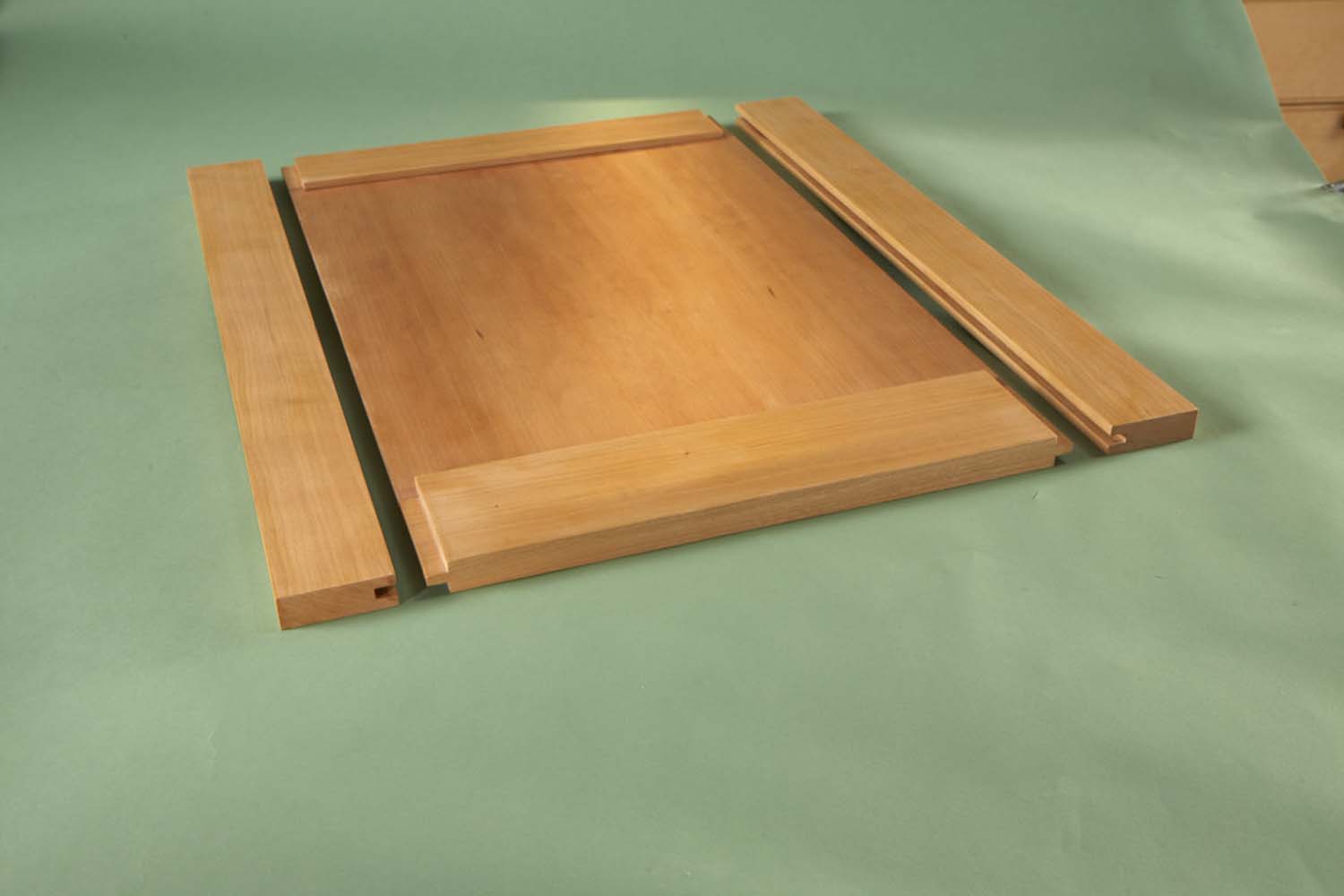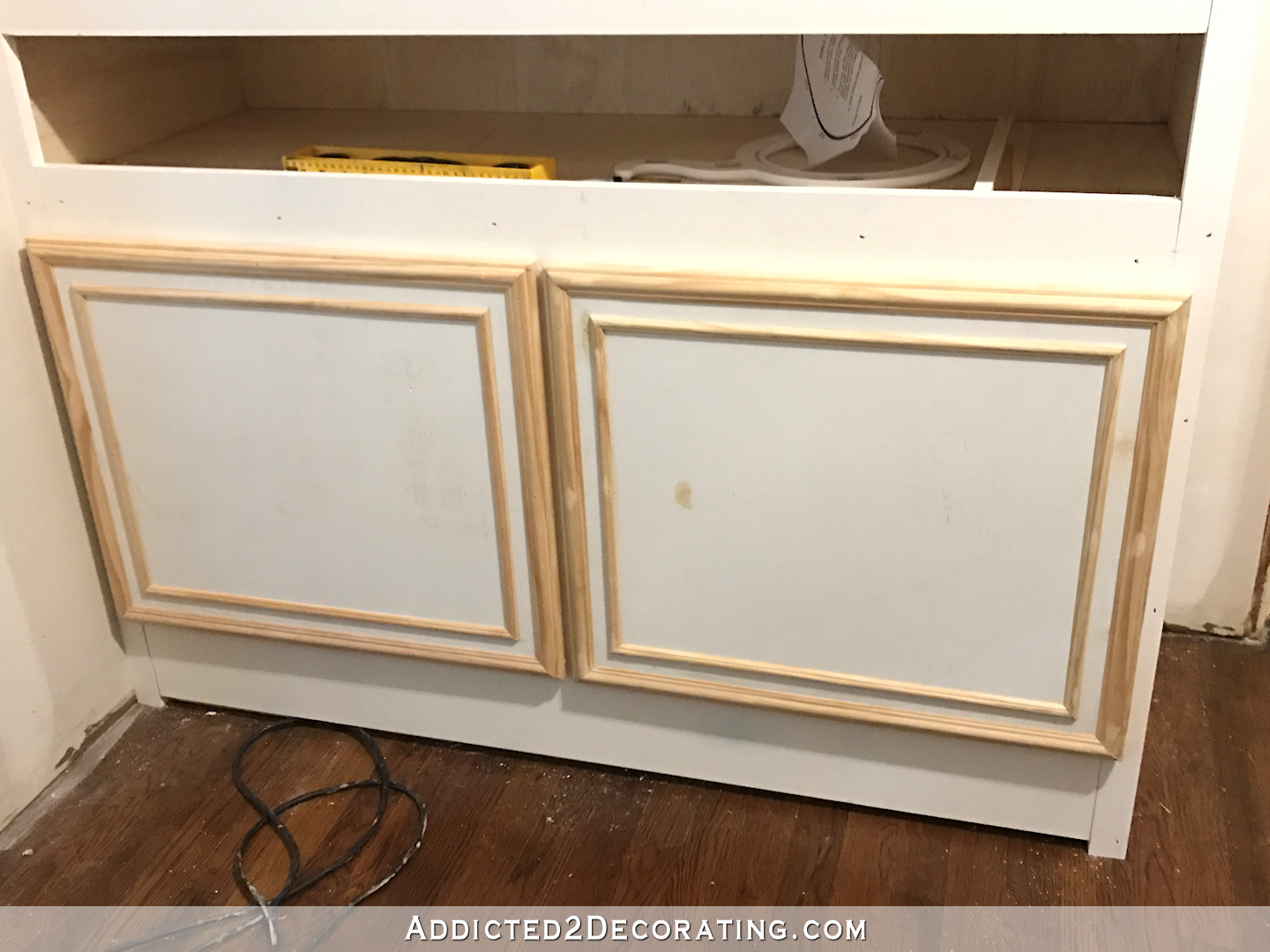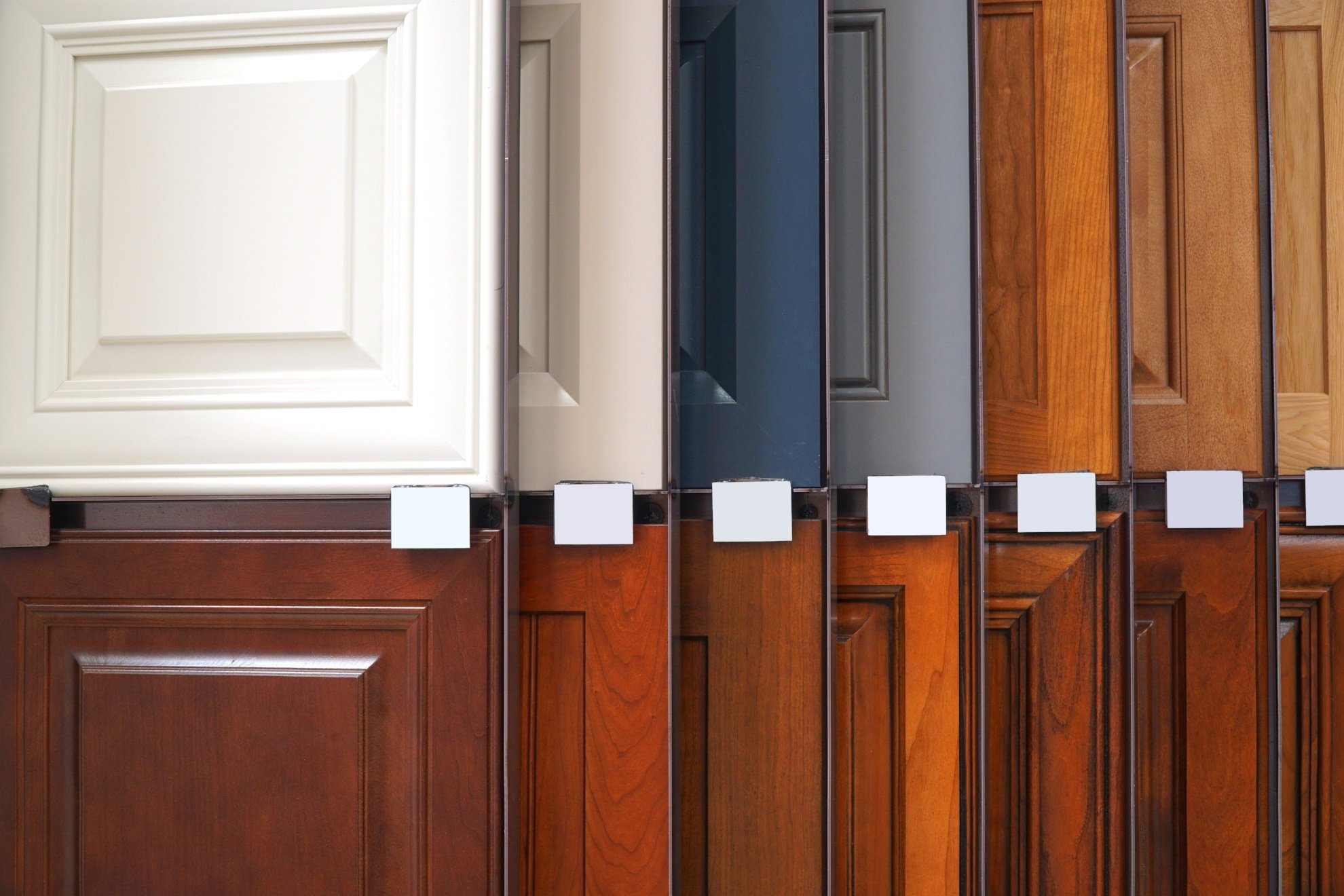Materials and Methods for Replacing Kitchen Cabinet Doors

Replacing your kitchen cabinet doors is a rewarding DIY project that can dramatically transform your kitchen’s aesthetic and functionality. The process involves careful material selection, precise construction, and secure installation. Choosing the right materials and techniques is crucial for achieving a durable and visually appealing result.
Cabinet Door Material Selection
Several materials are suitable for crafting new cabinet doors, each with its own set of advantages and disadvantages. The choice depends on your budget, desired aesthetic, and the level of DIY skill you possess.
| Material | Durability | Cost | Appearance |
|---|---|---|---|
| Solid Wood (e.g., Oak, Cherry, Maple) | High; durable and long-lasting with proper care. | High; varies greatly depending on wood type and quality. | Classic, warm, and can be finished in various ways. Grain patterns add character. |
| Medium-Density Fiberboard (MDF) | Moderate; susceptible to moisture damage if not properly sealed. | Low to Moderate; readily available and cost-effective. | Smooth, uniform surface; easily painted or stained, but lacks the natural grain of wood. |
| Plywood | Moderate to High; durable and stable, but edges may require careful finishing. | Moderate; more affordable than solid wood, but more expensive than MDF. | Versatile; can be painted or stained, offers some visual texture. |
| Thermofoil | Moderate; resistant to moisture and scratches, but can be difficult to repair if damaged. | Moderate; a cost-effective option for a modern look. | Smooth, consistent finish available in a wide range of colors and styles. |
Constructing Solid Wood Cabinet Doors
Building solid wood doors requires precision and woodworking skills. The following steps Artikel the process:
Making new kitchen cabinet doors – Careful planning and accurate measurements are essential for a successful outcome. Ensure you have all necessary tools and materials before beginning.
- Cut the Wood: Accurately cut the wood panels to the desired dimensions using a table saw or circular saw. Allow for extra material for finishing.
- Shape the Edges: Use a router or hand plane to create desired edge profiles (e.g., rounded, beveled). This step enhances the aesthetic appeal.
- Create Joints (Optional): If using more complex designs, create joinery such as rabbets, dadoes, or mortise and tenon joints for strength and visual interest.
- Assemble the Door: Use wood glue and clamps to assemble the door panels. Ensure alignment and proper clamping pressure for a strong bond.
- Sanding: Thoroughly sand the door using progressively finer grits of sandpaper, ensuring a smooth surface for finishing.
- Finishing: Apply primer and then paint or stain to achieve the desired finish. Multiple coats may be needed for optimal coverage and protection.
Attaching New Cabinet Doors
Several methods exist for attaching new cabinet doors to existing frames. The best choice depends on the type of hinges and the cabinet construction.
Selecting the appropriate hinges is critical for both functionality and aesthetics. Consider the weight of the door and the desired door opening angle.
- European Hinges: These hinges are concealed, providing a clean, modern look. Installation requires precise drilling and alignment. Advantages: Sleek appearance, strong hold. Disadvantages: More complex installation.
- Full Overlay Hinges: These hinges allow the door to fully cover the cabinet frame. Advantages: Clean, modern look. Disadvantages: Requires precise measurements and alignment.
- Half Overlay Hinges: These hinges leave a portion of the cabinet frame visible. Advantages: Easier installation than full overlay. Disadvantages: Less modern look.
Cherry Wood Cabinet Door Design
This design uses cherry wood for its rich color and beautiful grain. The door measures 12″ wide x 24″ high x 1.5″ thick. A simple raised panel design is employed, with a 1″ wide frame surrounding a recessed center panel. The frame and panel are joined using rabbet joints for strength and a clean look. The finish is a clear coat to showcase the wood’s natural beauty.
The overall aesthetic is clean, classic, and elegant. The rich cherry wood adds warmth and sophistication to the kitchen. The raised panel design provides subtle visual interest, while the simple lines maintain a sense of understated elegance. The functionality is straightforward, providing easy access to the cabinet contents.
Refacing Existing Kitchen Cabinet Doors

Refacing kitchen cabinet doors offers a cost-effective alternative to complete cabinet replacement, significantly updating the kitchen’s aesthetic appeal without the expense and disruption of a full renovation. This process involves resurfacing the existing doors with new materials, effectively concealing any imperfections or outdated styles. Several techniques exist, each offering unique advantages and disadvantages in terms of cost, durability, and visual outcome.
Comparison of Refacing Techniques
The choice of refacing method depends on budget, desired aesthetic, and the level of DIY skill. Below is a comparison of three common techniques: veneer, paint, and laminate.
| Method | Cost | Durability | Appearance |
|---|---|---|---|
| Veneer | Moderate | Moderate; susceptible to scratches and water damage if not properly sealed. | Can mimic the look of more expensive wood species; offers a natural, elegant finish. |
| Paint | Low | Good; durable when using high-quality paint and proper preparation. | Highly versatile; allows for a wide range of colors and finishes (matte, gloss, etc.). |
| Laminate | Moderate to High (depending on laminate quality) | High; resistant to scratches, water, and heat. | Offers a wide variety of colors, patterns, and textures; can mimic natural materials like wood or stone. |
Preparing Cabinet Doors for Refacing
Thorough preparation is crucial for a successful refacing project. This ensures a smooth, even surface for the new material and optimal adhesion.
The following steps are essential for preparing cabinet doors for refacing, regardless of the chosen method:
- Cleaning: Remove all grease, grime, and loose particles using a degreasing cleaner and a soft cloth. Allow to dry completely.
- Sanding: Lightly sand the surface with fine-grit sandpaper (180-220 grit) to remove any imperfections and create a better surface for adhesion. Wipe away dust with a tack cloth.
- Priming (for paint and some laminates): Apply a high-quality primer to ensure even paint coverage and better adhesion. Allow the primer to dry completely according to the manufacturer’s instructions.
Applying Laminate to Cabinet Doors
Laminate offers a durable and visually appealing refacing option.
Tools and Materials Required:
- Laminate sheets (ensure sufficient amount for all doors)
- Measuring tape and pencil
- Utility knife or laminate shears
- Straight edge or metal ruler
- Contact adhesive
- Roller or squeegee
- Jigsaw (for complex cuts)
- Sandpaper
- Caulk
Application Steps:
- Measure and cut the laminate to the exact dimensions of each cabinet door, adding a small extra margin for adjustments.
- Apply contact adhesive to both the back of the laminate and the surface of the cabinet door according to the manufacturer’s instructions.
- Carefully position the laminate onto the cabinet door, ensuring it is aligned correctly.
- Use a roller or squeegee to firmly press the laminate onto the door, removing any air bubbles.
- Trim any excess laminate using a utility knife and straight edge.
- Caulk the edges for a clean finish.
Painting Cabinet Doors, Making new kitchen cabinet doors
Painting offers a versatile and cost-effective refacing solution. High-quality paint ensures a durable and professional-looking finish.
Choosing the right paint is crucial for a long-lasting finish. Consider using a high-quality acrylic-alkyd or a durable enamel paint specifically designed for cabinets. These paints offer superior durability and are resistant to chipping and scratches.
Step-by-step instructions:
- Clean the surfaces thoroughly: Remove all dust, grease, and debris.
- Apply a primer: This creates a smooth, even base for the paint and enhances adhesion. Allow to dry completely according to the manufacturer’s instructions (typically 2-4 hours).
- Apply the first coat of paint: Use even strokes and avoid overloading the brush or roller. Allow to dry completely (typically 2-4 hours).
- Sand lightly between coats: Use fine-grit sandpaper (220 grit) to smooth out any imperfections. Wipe away dust with a tack cloth.
- Apply a second coat of paint: This ensures a uniform and durable finish. Allow to dry completely (typically 2-4 hours).
- Apply additional coats as needed: For a particularly deep or rich color, a third coat might be beneficial. Allow to dry completely.
Customizing and Designing New Kitchen Cabinet Doors: Making New Kitchen Cabinet Doors

Designing new kitchen cabinet doors presents a unique opportunity to personalize your kitchen’s aesthetic and functionality. Careful consideration of style, materials, and hardware can dramatically impact the overall look and feel of the space, transforming it from ordinary to extraordinary. The following explores various design concepts and customization options.
Three Distinct Cabinet Door Design Concepts
The choice of cabinet door style significantly influences the kitchen’s character. Three distinct concepts, each with a unique aesthetic and construction method, are presented below.
- Shaker Style: This classic style features a simple, recessed panel within a frame. Its clean lines and understated elegance suit a variety of kitchen designs.
- Materials: Solid wood (maple, cherry, oak) or high-quality wood veneer are common choices, offering durability and a natural look. MDF (medium-density fiberboard) is a more budget-friendly alternative.
- Construction: The frame and panel are typically joined using rabbet joints or dowels, ensuring strength and stability. The recessed panel can be flat or slightly raised.
- Aesthetic: Shaker style doors exude a timeless, traditional charm, suitable for both modern and classic kitchens. The clean lines and simple design allow for versatile hardware choices.
- Raised Panel Style: This style features a raised central panel, creating a more ornate and visually interesting look than the Shaker style.
- Materials: Similar to Shaker style, solid wood or high-quality veneer provides a luxurious feel. MDF is also a viable option.
- Construction: The raised panel is often created by molding or carving the wood. The panel is then glued and fastened to the frame.
- Aesthetic: Raised panel doors add a touch of sophistication and elegance. The raised panel creates depth and shadow, adding visual interest to the cabinetry.
- Flat Panel Style: This modern style features a completely flat door, creating a sleek and minimalist aesthetic.
- Materials: MDF, thermofoil, or lacquered wood are popular choices. Thermofoil offers durability and a wide range of color options. Lacquered wood provides a high-gloss finish.
- Construction: Flat panel doors are typically constructed from a single piece of material, simplifying the construction process.
- Aesthetic: Flat panel doors create a clean, contemporary look, ideal for modern and minimalist kitchens. The lack of ornamentation allows for a focus on hardware and other design elements.
Kitchen Cabinet Hardware Options
Hardware choices significantly impact the overall design. Knobs, pulls, and hinges not only enhance functionality but also contribute to the aesthetic appeal. Careful selection is crucial for achieving a cohesive and visually pleasing result.
| Style | Material | Cost (Approximate) | Mounting Type |
|---|---|---|---|
| Cup Pull | Nickel | $5-$15 per unit | Surface Mount |
| Bar Pull | Brushed Brass | $10-$25 per unit | Surface Mount |
| Knobs | Ceramic | $3-$10 per unit | Surface Mount |
| Cabinet Handles | Stainless Steel | $8-$20 per unit | Surface Mount |
| Inset Hinges | Zinc Alloy | $5-$12 per pair | Concealed |
| Overlay Hinges | Steel | $3-$8 per pair | Visible |
Incorporating Unique Design Elements
Adding unique design elements elevates custom-made cabinet doors from standard to exceptional.
Inlays: Inlays involve embedding contrasting materials, such as wood veneers, metal, or stone, into the door surface. The process involves precisely cutting a recess in the door and carefully inserting and securing the inlay material. A router and various inlay techniques can be used.
Glass Panels: Glass panels can add light and visual interest to cabinet doors. The glass can be frosted, textured, or clear, depending on the desired aesthetic. The process involves cutting a precise opening in the door and securing the glass panel with appropriate sealant and framing.
Decorative Molding: Decorative molding can add visual texture and detail to cabinet doors. Various molding profiles are available, offering different aesthetic effects. The molding is typically glued and nailed or screwed to the door’s surface, creating a three-dimensional effect.
